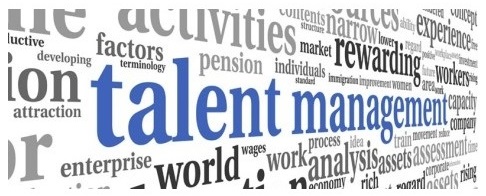 I recently read a blog posted by one of my associates regarding the strategy of a standalone talent management solution or holistic HRIS/HCM. There seems to be some very strong opinions about the fundamental differences between Talent Management vs Human Capital Management (HCM). While there is certainly no simple answer nor any type of downloadable checklist or analyst report to distinguish the difference, there are certainly specific characteristics that are better aligned for each strategy. It is very similar to a recent blog written about the Types of HRIS Systems: HRIS vs. HCM vs. HRMS. In order to share the significance of each, I thought I would provide my definition of “Talent Management” vs “HCM”.
I recently read a blog posted by one of my associates regarding the strategy of a standalone talent management solution or holistic HRIS/HCM. There seems to be some very strong opinions about the fundamental differences between Talent Management vs Human Capital Management (HCM). While there is certainly no simple answer nor any type of downloadable checklist or analyst report to distinguish the difference, there are certainly specific characteristics that are better aligned for each strategy. It is very similar to a recent blog written about the Types of HRIS Systems: HRIS vs. HCM vs. HRMS. In order to share the significance of each, I thought I would provide my definition of “Talent Management” vs “HCM”.
Talent Management software is an integrated set of applications, or as the marketing likes to pitch – “Unified Talent Management”, that are commonly used by HR professionals to hire, develop, connect and retain employees. HCM software is similar except it takes a comprehensive end-to-end approach to managing a company’s workforce. Many describe it as “cradle to grave” or “hire to retire”.
So what is the difference? The simplest explanation is Talent Management software focuses on six primary functional areas for managing employees:
- Recruiting or ATS
- Onboarding
- Performance and Goal Management
- Learning Management System (LMS)
- Compensation and Salary Planning
- Career Development and Succession Planning.
A HCM system would incorporate all of these functional areas including capabilities for administrating benefits and open enrollment, FMLA tracking, life events, electronic 834 carrier connections, absence plans (e.g. vacation, sick, holiday, PTO) and accruals, timesheets, and self service for employees and managers. A HCM would also include U.S. Federal compliance reporting for employers (e.g. EEO-1, OSHA 300/300A, Vets-100 and ACA 1094/1095). In general terms, the breadth of HCM functionality is much broader allowing a more complete approach to managing an organization’s workforce.
Looking at this in a different way, let me provide you a short list of Talent Management vs Human Capital Management software vendors based on the criteria I just provided.
I would categorized Halogen, Saba, HRsmart, iCIMS, Lumesse, PeopleFluent, and Cornerstone OnDemand as Talent Management providers. Gartner, a leading provider of technology research and advisory firm, validates this categorization based on their latest magic quadrant for Talent management suites.
Why I classify them as Talent vendors is based on the gap(s) of functional capabilities to help HR professionals manage benefits, absences, time collection or ability to provide federal and state employers compliance reporting. These may seem small or inconsequential, but to a benefit administrator managing twenty types of benefit plans and handling benefit open enrollment these areas are definitely not insignificant.
Consider HCM solutions from FinancialForce, Epicor, SAP, Oracle, and Workday who provide most, if not all, of the functional aspects of a talent management suite plus benefits administration, benefit open employment, absence management, position management, salary planning, time and labor management, and federal compliance reporting. HCM systems focus on end-to-end capabilities with foundational components such as an employee’s main profile, skills, competencies, job description and classifications, positions and budgeting. HCM systems offer comprehensive tools for workflow, salary planning, and utilities to integrate to 3rd party systems such as payroll providers. Talent Management systems do not address these functional aspects and for me, what make them so different from HCM systems.
So why have companies spent billions over the course of the last 10 years on Talent Management software if they are missing significant functional areas to manage employees? It is my opinion that HR professionals have been attracted to these Talent Management apps for the following reasons:
- Potentially easier to get project approval vs. HCM
- Offered at a lower price point vs. HCM
- Smaller investment = less risk vs. larger investment = bigger risk
- Shorter timeframe to deploy and drive immediate results vs. HCM
- Complimentary to existing system vs. complete replacement of existing system(s)
- Greater functionality capabilities in some functional areas (i.e. Learning Management System) vs. HCM
- Talent Management systems are more appealing to executives (i.e. talent acquisition, performance management, learning) vs. HCM (i.e. benefit administration, position control, and compliance)
- Perception that the HR Team can become self-sufficient when it comes to system configuration or designing reports.
What makes this hard and not so “black and white” to determine the difference between Talent Management and HCM applications is the growing trend for Talent Management vendors to cross over to look more like an HCM provider by adding more functional capabilities. At the moment, two particular Talent Management vendors stand out: SilkRoad (with Heartbeat) and SuccessFactors (with Employee Central). Their ability to now offer customers core HR capabilities (e.g. benefits administration, open enrollment, or absence management) blurs the lines between these two categories. There have also been rumors and speculation that Cornerstone OnDemand will also be adding core HR functionality to join this group of fuzziness.
Why are these Talent Management vendors shifting their focus away from Talent and heading towards an HCM after so many years of success? A big clue can be found in Josh Bersin’s recent article written earlier this year titled “Why People Management is Replacing Talent Management”. Bersin’s article describes the software gaps with Talent Management and the impact it is having on an HR team’s ability to provide more significant value.
For me, I’ve always believed the best strategy for companies was to invest in an HCM over a suite of Talent Management applications. There are some rare times when I’ve recommended the opposite, but generally speaking, an end-to-end HCM covering the life cycle of an employee is always more prestigious. To use an analogy, if Talent Management was a 9th grader in high school, when a senior (an HCM) passes them in the hall, the 9th grader cannot help to wonder what life would be like in their shoes. The glamour of being a senior or an HCM in this case. I believe all Talent Management providers dream of what life would be like if they offered similar functionality to the HCM providers.
My reasons for proposing an HCM over Talent Management:
- “Do it once and do it right!” (at least for the next 5-7 years). Solving specific pain points with stand-alone apps such as an ATS, performance or benefit open enrollment tool with lead to inconsistent data, challenges for comprehensive reporting and possible workflow issues in the future.
- Minimize your cloud applications to avoid “integration nightmares” – integrating to other apps suck and are always riddled with the unknown and surprises. There are tons of articles/blogs that speak specifically about integration challenges and how it’s not so easy.
- The user experience is better for employees accessing a single system with a single password. I believe this approach offers higher adoption and better data validity than accessing multiple solutions.
- A single-system of record, with a single user interface, single set of reporting and analytical tools, and single mobile app always trumps a collection of apps designed to do the same thing.
Last thoughts, choosing a HCM over a talent management solution will require a well thought out plan when it comes to the justification. An HCM is going to touch every employee, manager, executive, candidate and even contingent worker. The process is usually long, time consuming and maybe difficult getting all decision makers to agree on the goal, vendor or delivery model. In the end, when you see the light at the end of the tunnel, and you’re looking at meaningful data on your tablet and the COO comments on what a difference the new HCM is making, you will smile.
Please feel free to contact us.
or
Explore our Talent Management Solutions now!




